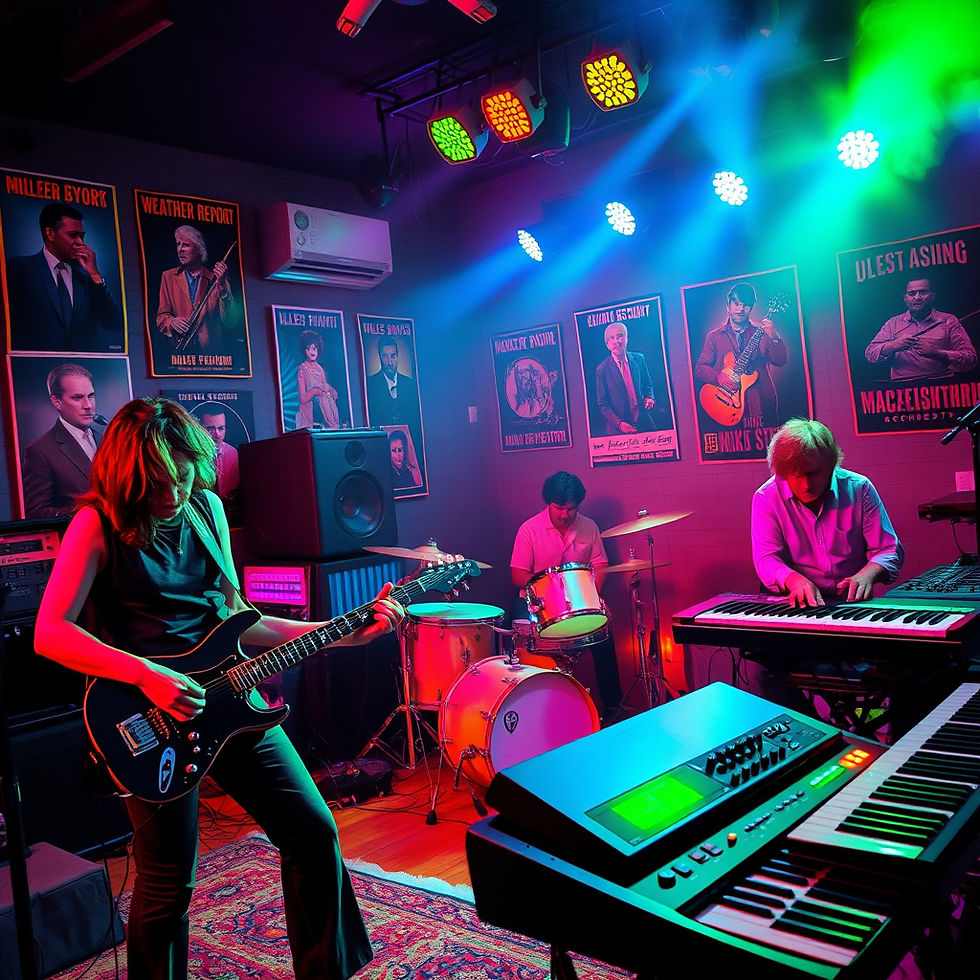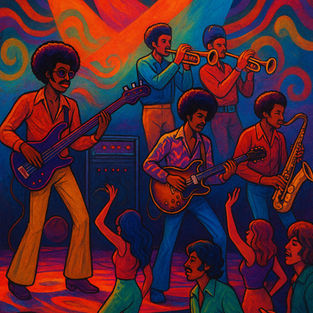
Photo- AI Generated
Jazz Fusion: Blending Genres in the 1970s
The 1970s were a decade of experimentation, and the boundaries between musical genres began to blur.
3 September 2025
One of the most daring and significant products of this cultural era was jazz fusion, a genre that combined jazz's improvisational freedom with the magnified energy of rock, funk, and world music. Jazz fusion did more than just modify the sound of jazz; it altered the course of modern music, having a lasting impact on everything from progressive rock to hip-hop.
The Roots of Fusion
The seeds of jazz fusion were established in the late 1960s, when musicians such as Miles Davis began to push beyond traditional jazz limitations. Davis' landmark 1970 album Bitches Brew established the genre by blending electric instruments, funk grooves, and prolonged improvisations. With its complex textures and refusal to adapt to a single style, Bitches Brew heralded the coming of fusion as a force capable of captivating both jazz purists and rock audiences.
Breaking the mould
Jazz fusion was groundbreaking because it refused to be boxed in. Jazz players began to use electric guitars, synthesisers, and complicated rhythms derived from rock and funk. Drummers preferred backbeat-heavy patterns, but bassists experimented with slap techniques and funk-inspired riffs.
Weather Report, Mahavishnu Orchestra, and Return to Forever took fusion to new creative heights. Weather Report's Heavy Weather (1977), which featured the legendary track "Birdland," demonstrated how fusion could be both technically impressive and accessible to a general audience. Meanwhile, the Mahavishnu Orchestra, led by John McLaughlin, astounded audiences with dazzling performances that combined jazz improvisation with the raw intensity of rock.
Virtue and Innovation
The 1970s fusion era was distinguished by its exceptional musicianship. Chick Corea, Herbie Hancock, Jaco Pastorius, and Billy Cobham became well-known jazz musicians, each contributing to the genre's dramatic developments. Hancock's Head Hunters (1973) fusion of jazz, funk, and electronic sounds resulted in a groove-driven album that is still considered a classic in both genres today.
These artists were not merely playing notes; they were redefining the vocabulary of music. Their experimenting with new recording methods, synthesisers, and effects pedals paved the way for the electronic and experimental sounds that would dominate the next decades.
A cultural crossroads.
Jazz fusion exemplified the cultural attitude of the 1970s: open, varied, and restless. The civil rights movement, the counterculture, and the globalisation of music all influenced how musicians handled sound. Fusion, which combined African, Latin, and Eastern musical traditions with Western jazz and rock, expressed a global viewpoint that resonated with a youth seeking cross-cultural connections.
Legacy of Fusion
While critics were frequently divided, some appreciating fusion's audacity, others regretting the "dilution" of conventional jazz, its impact is unmistakable. Fusion's technical accuracy and daring spirit redefined musicianship, inspiring generations of jazz, rock, and funk performers.
The legacy of fusion continues to this day. Progressive rock bands, jam bands, and modern jazz ensembles all evoke the brave experimentation that distinguished the 1970s fusion era. Hip-hop artists and producers have also sampled fusion's grooves and textures, demonstrating that its relevance transcends genres.
Why Fusion Still Matters
Jazz fusion was more than just a genre; it was a movement of discovery. By refusing to be constrained by labels, fusion musicians demonstrated that music's greatest power is its ability to evolve, adapt, and blend. The 1970s may have been its golden age, but the spirit of jazz fusion lives on, reminding us that the most thrilling work is often created when boundaries are shattered.









